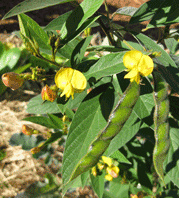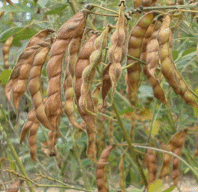| Organic Seeds | Edible Plants | Organic Pest Controls | Books | Tools, Propagation & Fertilisers | Sprouting & Microgreens | Poultry Supplies | Specials & Gift Ideas |

Top

We will send an email to this address*
when is next available
* we will use this email address only for this notification and then we will delete it.
 Home
Home
Green Harvest Organic Gardening Supplies is permanently closed as of 5pm on 1-11-2023.
We will not be taking orders by this website, in person, by phone or email. Our display garden and retail shop are closed forever.
Read more...
Phone:07 54357000
Phone calls will only be responded to sporadically and only in reference to orders placed prior to 2-11-2023. All the useful growing and organic pest management research and resources are available on this website for a while still.
 Pigeon Pea Growing Information © Frances Michaels
Pigeon Pea Growing Information © Frances MichaelsCommon Name: Pigeon Pea, Congo Pea, Red Gram
Botanical Name:Cajanus cajan syn. Cajanus indicus
Family: Fabaceae
Plant Description: A woody, leguminous shrub, to 3.6 m, with yellow and red flowers.
Ecology: It is hardy, widely adaptable and tolerant of temperatures as high as 35°C. It can be killed by heavy frost. An average annual rainfall between 600 and 1,000 mm is most suitable. However, it can be grown in humid areas, even over 2,500 mm of rainfall and is renowned for its drought tolerance. It gives economic yields of seeds in areas where rainfall averages about 400 mm annually. Although it cannot withstand waterlogging it can be grown in a wide range of soils, as it tolerates low fertility. Some cultivars are tolerant of salinity and aluminium. A pH range of 4.5 - 8.4 is tolerated.
Uses:
- Food; seeds are 25% protein, can be eaten fresh or as split dried peas, are used for dhal in India, contain 5 times more Vitamin A and C than green peas. The leaves and young shoots can be eaten cooked, they are fibrous and have a strong spicy odour.
- Animal Fodder; an excellent feed for cattle, pigs and poultry.
- Green Manure; incorporate the plants as they flower.
- Mulch production; can be cut many times in a season.
- Alley cropping; provides nitrogen, habitat and soil stabilisation.
- Windbreaks; suitable as a shelterbelt around vegetable gardens.
 Recommended Planting Time: Spring, or during the wet season, soil temperature should
be at least 25°C for germination, a higher soil temperature will give a more even germination.
Recommended Planting Time: Spring, or during the wet season, soil temperature should
be at least 25°C for germination, a higher soil temperature will give a more even germination.Planting Depth: It can be direct-seeded, or planted into forestry tubes and later transplanted. Sow the seed 2.5 cm deep.
Details: Soaking seeds overnight will improve germination. Protect young plants from all grazing animals.
Inoculant: A group of bacteria called Rhizobium live in a symbiotic relationship with many legumes. This is a big advantage to the plant, as it is able, once inoculated, to produce its own nitrogen, from the soil air. The bacteria are stored in peat, and as this is a living culture, it must be treated with care. It should be stored in the fridge and used within 3 months. Do not separate from the seed packet as the inoculant attached is specific to the individual legume. To use, moisten the seed with a small amount of milk or water and stir in the inoculant until seeds are coated. Do not inoculate the seed until you are ready to sow it and do not leave the inoculated seed in the sun.
Pigeon Pea plants are available seasonally.
 Home
Home
Green Harvest Organic Gardening Supplies is permanently closed as of 5pm on 1-11-2023.
We will not be taking orders by this website, in person, by phone or email. Our display garden and retail shop are closed forever.
Read more...
Phone:07 54357000
Phone calls will only be responded to sporadically and only in reference to orders placed prior to 2-11-2023. All the useful growing and organic pest management research and resources are available on this website for a while still.
We guarantee our seeds to the value of the purchase price. We are happy to replace the seeds, give you a credit or refund, whichever you prefer. Other than our guarantee to the extent of the purchase price Green Harvest gives no other warranty expressed or implied. No liability will be accepted by Green Harvest, its owners or employees as to the accuracy of any information. No responsibility will be taken for damage to property or persons due to information given about a product or technique. No responsibility will be taken for the loss of a crop or income due to information given about a product or technique.
 Shopping here is private and secure.
Shopping here is private and secure.
Copyright © 2001 - 2024 Green Harvest Organic Gardening Supplies
No part of this website may be reproduced without permission of the owner